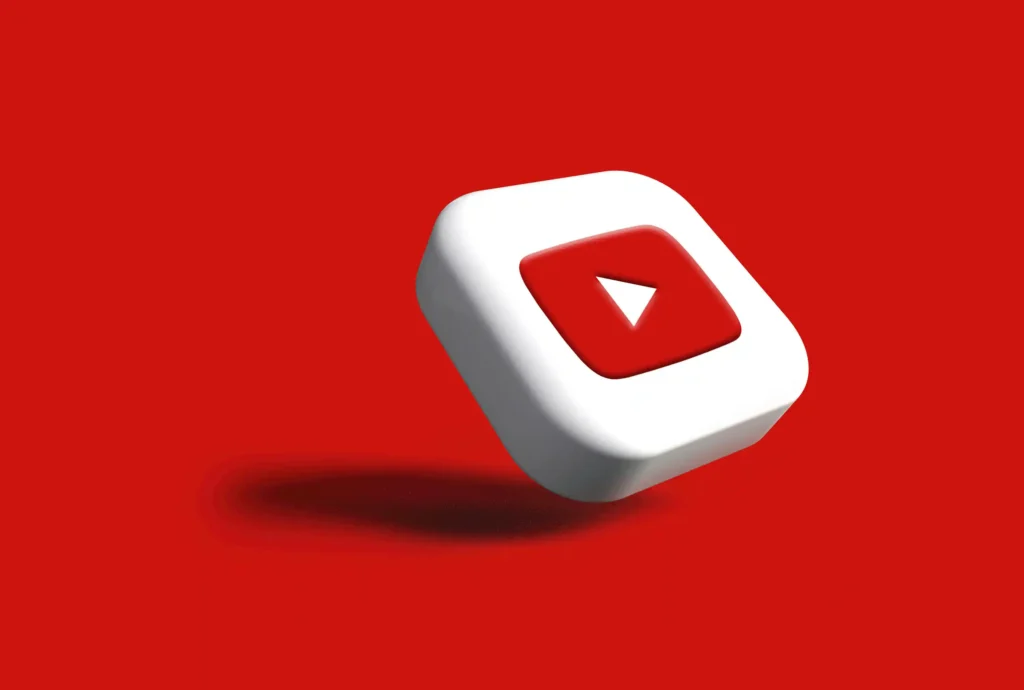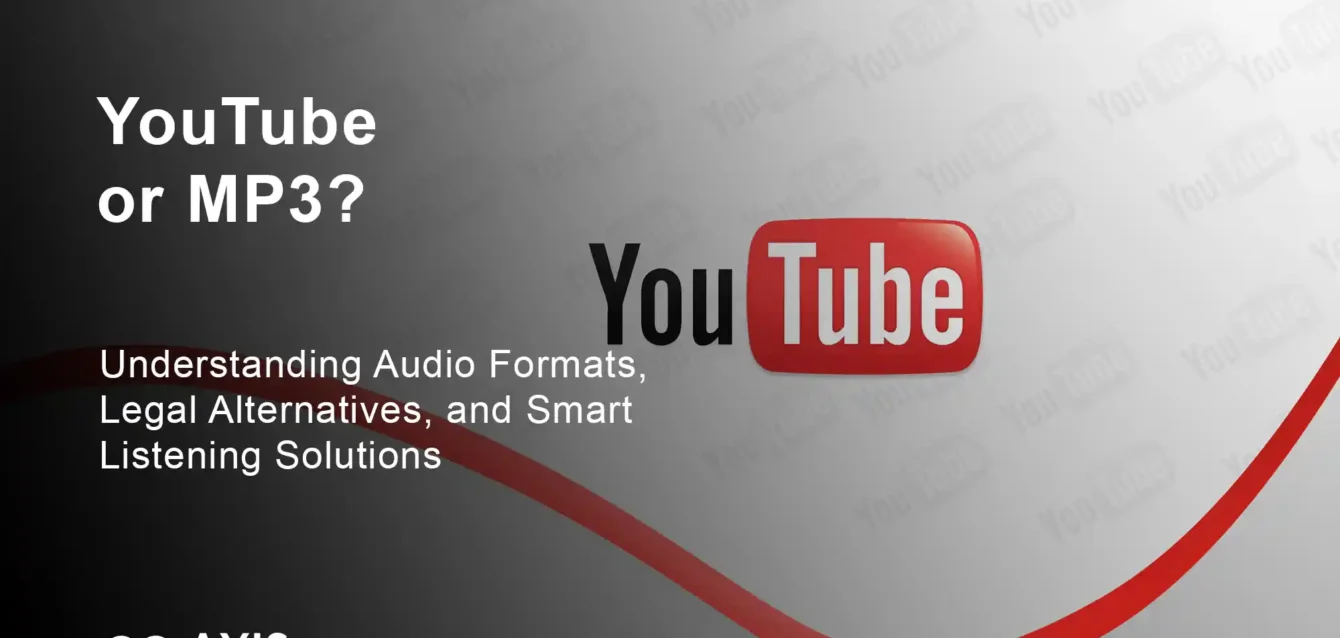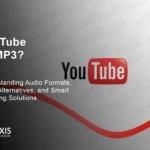YouTube or MP3
The digital music landscape has transformed how people access and consume audio content. YouTube hosts over 800 million music videos and attracts 2 billion monthly users seeking entertainment, education, and information. Meanwhile, MP3 remains the most recognizable audio format, representing decades of digital music evolution. Understanding the relationship between these platforms and formats, alongside the legal frameworks governing content consumption, empowers users to make informed decisions respecting copyright while enjoying high-quality audio experiences.
According to a 2024 IFPI Global Music Report, music streaming now accounts for 67% of global recorded music revenue, demonstrating the industry’s digital transformation. Yet confusion persists around converting YouTube content to MP3 format. This guide clarifies the technical, legal, and practical considerations, exploring legitimate alternatives that satisfy audio consumption needs without infringing copyright or violating platform terms of service.
Understanding Digital Audio Formats
Before examining YouTube’s role in audio consumption, grasping fundamental audio format characteristics provides essential context for making informed decisions about content acquisition and storage.
MP3 Technology and Compression
MP3 (MPEG-1 Audio Layer III) revolutionized digital music when introduced in 1993 by the Fraunhofer Institute. The format uses lossy compression reducing file sizes to approximately 1/10th of uncompressed audio while maintaining acceptable sound quality for most listeners. According to IEEE research, MP3 compression removes audio frequencies less perceptible to human hearing, achieving significant size reduction without obvious quality degradation.
Standard MP3 bitrates range from 128 kbps to 320 kbps, directly impacting file size and audio fidelity. A 128 kbps encoding produces approximately 1 MB per minute of audio, suitable for podcasts and spoken word content where extreme fidelity matters less. 320 kbps encoding, considered CD-quality by many listeners, generates roughly 2.4 MB per minute, preserving more audio detail for music appreciation.
The format’s universal compatibility across devices, operating systems, and playback software cemented its dominance. From smartphones and tablets to car audio systems and smart speakers, MP3 playback support remains nearly universal three decades after introduction. This interoperability explains why MP3 persists despite newer formats offering superior compression or quality characteristics.
Modern Audio Format Alternatives
While MP3 dominated for years, several alternatives now provide enhanced capabilities addressing specific use cases.
AAC (Advanced Audio Coding) delivers better sound quality than MP3 at equivalent bitrates through more efficient compression algorithms. Apple iTunes, YouTube, and plateformes de diffusion en continu widely adopt AAC. Research published in the Journal of the Audio Engineering Society demonstrates AAC achieving transparency (indistinguishable from original source) at 192 kbps, whereas MP3 typically requires 256 kbps or higher. iOS devices and iTunes ecosystem heavily favor AAC, making it the preferred format for Apple users.
FLAC (Free Lossless Audio Codec) provides bit-perfect reproduction of original audio without any quality loss. While file sizes remain larger than lossy formats (typically 50-70% of uncompressed size), audiophiles and archivists value perfect fidelity. According to Xiph.Org Foundation, FLAC supports up to 8 channels and 32-bit resolution, accommodating professional audio requirements. Streaming services like Tidal and Qobuz offer FLAC streaming for subscribers prioritizing audio quality.
Opus represents a modern open-source codec optimized for internet streaming. The Internet Engineering Task Force (IETF) standardized Opus in RFC 6716, noting superior performance across speech and music at various bitrates. Real-time communication platforms including Discord, WhatsApp, and Zoom employ Opus for efficient, high-quality audio transmission.
OGG Vorbis provides open-source lossy compression comparable to AAC quality. While less universally supported than MP3, Vorbis avoids patent licensing issues that historically complicated MP3 adoption. Spotify historically used Ogg Vorbis for streaming before transitioning to AAC, demonstrating the format’s viability for large-scale music delivery.
YouTube’s Role in Audio Consumption
YouTube evolved from a video-sharing platform into a primary music discovery and consumption destination. Understanding YouTube’s capabilities, limitations, and terms of service clarifies appropriate usage patterns.
YouTube as a Music Platform
According to YouTube’s official statistics, music represents the platform’s most popular category, with music videos accounting for 93% of the most-viewed content. The platform’s vast catalog includes official music videos, live performances, rare recordings, user-generated content, and remix culture unavailable through traditional distribution channels.
YouTube Music, the platform’s dedicated music service, provides curated playlists, personalized recommendations, and ad-supported free tier alongside a premium subscription option. The service competes directly with Spotify, Apple Music, and Amazon Music, demonstrating YouTube’s recognition of music consumption as a core offering.
The platform’s recommendation algorithm, powered by machine learning analyzing billions of user interactions, introduces listeners to new artists and genres effectively. Research from Google AI demonstrates YouTube’s recommendation system achieving 70% click-through rates, significantly outperforming traditional music discovery methods.
Legal Framework and Terms of Service
YouTube’s Terms of Service, legally binding for all users, explicitly restrict downloading content except through official channels. Section 4B states users may access content solely for streaming purposes unless explicit download functionality appears or written permission is granted. This provision applies regardless of content ownership or licensing status.
Title 17 of the United States Code establishes copyright law framework relevant to content downloading. Section 106 grants copyright holders exclusive rights to reproduce, distribute, perform, display, and create derivative works. Downloading copyrighted content without authorization potentially violates these exclusive rights, though specific legal outcomes depend on circumstances including fair use considerations.
The Recording Industry Association of America (RIAA) and music publishers actively enforce copyrights, historically pursuing legal action against large-scale infringement platforms. The 2017 shutdown of YouTube-mp3.org, previously receiving 60 million monthly visitors, exemplifies industry enforcement efforts. The platform’s operators faced legal consequences for facilitating copyright infringement on a massive scale.
Content Licensing and Creative Commons
Not all YouTube content carries identical restrictions. Creators may license videos under Creative Commons, explicitly permitting reuse under specified conditions. Creative Commons licenses range from permissive (CC BY allowing any use with attribution) to restrictive (CC BY-NC-ND prohibiting commercial use and modifications).
YouTube’s video information panel indicates licensing status, displaying either “Standard YouTube License” or specific Creative Commons license. Content under Creative Commons licenses may be legally downloaded and repurposed per license terms. The platform’s Audio Library offers thousands of royalty-free music tracks and sound effects creators can freely use in projects.
Public domain content, including recordings where copyrights expired or never existed, remains freely usable. The Internet Archive and Musopen provide extensive public domain music collections legally downloadable without restrictions. Classical music performances, historical recordings, and government-produced content often fall into public domain.
Legal Alternatives to YouTube Conversion
Numerous legitimate services provide legal offline audio access without violating copyright or platform terms. These alternatives compensate artists appropriately while delivering high-quality listening experiences.
YouTube Premium Benefits
YouTube Premium, available at $11.99 monthly (2025 pricing), offers the platform’s official solution for offline content access. Subscribers download videos and audio for offline viewing within YouTube and YouTube Music apps, legally accessing content while supporting creators through subscription revenue sharing.
The service eliminates advertisements across all YouTube properties, improving user experience significantly. Background playback enables audio listening while using other applications or with screen off, critical for music listening scenarios. YouTube Music Premium inclusion provides dedicated music app with offline downloads, curated playlists, and audio-only streaming conserving bandwidth.
According to YouTube’s Creator Revenue reports, Premium subscriptions generate higher per-stream payouts to creators compared to ad-supported viewing. A 2023 analysis by Digital Music News found Premium subscriptions provide 5-10x more revenue to artists per play than free tier with advertisements. Supporting creators financially through legitimate subscription services sustains the ecosystem enabling free content production.
Family plans supporting six accounts reduce per-person costs to approximately $3 monthly, making Premium economically viable for households. Student discounts further reduce barriers for price-sensitive demographics. The service’s three-month free trial enables experiencing benefits before financial commitment.
Streaming Service Comparison
Multiple streaming platforms provide legal music access with offline download capabilities, each offering distinct characteristics and content libraries.
Spotify maintains the largest user base among streaming services, exceeding 600 million users globally including 236 million paid subscribers as of 2024. The platform’s free tier with advertisements enables unlimited music access supported by intermittent ads. Premium subscription ($10.99 monthly) provides ad-free listening, offline downloads, and superior audio quality up to 320 kbps. Spotify’s algorithmic playlists including Discover Weekly and Release Radar effectively surface new music matching user preferences. According to Spotify’s investor reports, users average 28 hours monthly listening time, demonstrating engagement effectiveness.
Apple Music integrates tightly with Apple’s ecosystem, offering 100 million songs and exclusive releases from popular artists. At $10.99 monthly, the service provides lossless audio up to 24-bit/192 kHz for supported tracks, exceeding Spotify’s quality ceiling. Spatial Audio with Dolby Atmos delivers immersive listening experiences on compatible devices. Apple Music Classical, included with subscriptions, provides classical music-optimized interface and metadata. iCloud Music Library enables uploading personal music collections, synchronizing across devices for unified library management.
Amazon Music Unlimited costs $9.99 monthly for Prime members or $10.99 for non-members, offering 100 million songs with offline downloads. Amazon’s integration with Alexa voice control and Echo smart speakers provides hands-free music access. The platform offers exclusive podcast content and partnerships with select artists for unique performances. HD and Ultra HD tiers provide enhanced audio quality for audiophiles, though requiring premium subscription tier.
Tidal differentiates through audiophile-quality streaming with HiFi and HiFi Plus tiers delivering lossless FLAC up to 24-bit/192 kHz. The platform, partially artist-owned, emphasizes higher artist payouts, claiming 3x Spotify’s per-stream rates. Exclusive content from artists like Jay-Z and Beyoncé provides unique value. At $10.99 (HiFi) and $19.99 (HiFi Plus) monthly, Tidal targets quality-focused listeners willing to pay premium prices for superior audio.
Deezer offers 90 million tracks with HiFi tier providing 16-bit/44.1 kHz lossless streaming. The platform’s Flow feature creates personalized mix of favorites and recommendations, comparable to Spotify’s radio functionality. Availability in 180+ countries provides broader international reach than some competitors. Pricing aligns with industry standards at $10.99 monthly for premium tiers.
All major streaming services offer family plans (typically $14.99-$16.99 monthly for 2-6 users) and student discounts (typically $4.99-$5.99 monthly with verification), improving value proposition for specific user segments. Free trials ranging from one to three months enable experiencing services before commitment.
Purchasing and Owning Digital Music
While streaming dominates current consumption, purchasing individual tracks or albums provides permanent ownership independent of subscription status or platform availability.
iTunes Store and Apple Music Store enable buying individual songs ($1.29 typically) or albums ($9.99-$14.99 commonly) in AAC format. Purchased music downloads to local storage, remaining accessible regardless of Apple Music subscription status. DRM-free files enable transferring to any compatible device without restrictions.
Amazon Music Store offers similar purchasing model with MP3 downloads. Prices typically range from $0.99-$1.29 per track and $7.99-$12.99 per album. Amazon AutoRip automatically provides digital copies of physical CD purchases, combining tangible media with digital convenience.
Bandcamp emphasizes supporting independent artists directly, with artists receiving 80-85% of purchase price. The platform enables fans purchasing in multiple formats simultaneously (MP3, FLAC, WAV, etc.) from single purchase. Many artists offer “name your price” options, allowing fans to pay above minimum or obtain music freely. Bandcamp Fridays waive platform fees entirely, directing 100% of purchases to artists. According to Bandcamp’s public data, the platform has paid artists over $1 billion since inception, demonstrating viability as artist revenue source.
Qobuz and HDtracks specialize in high-resolution audio downloads for audiophiles. Purchases include lossless formats up to 24-bit/192 kHz, exceeding CD quality. While more expensive than lossy formats, serious audio enthusiasts value maximum fidelity. These platforms cater to niche markets prioritizing quality over convenience or price.
SoundCloud and Independent Artist Platforms
SoundCloud hosts over 300 million tracks from independent artists, with many offerings available for free download when artists enable the feature. The platform’s “Download” button appears on eligible tracks, indicating artist permission for free distribution. This model supports emerging artists building fan bases through generous content sharing.
Patreon and similar patronage platforms enable supporting artists directly through monthly subscriptions, often providing exclusive content, early releases, and downloads to supporters. This direct artist-fan economic model bypasses traditional music industry intermediaries, allowing artists to retain larger revenue shares while building sustainable careers.
Free Music Archive curates high-quality music under Creative Commons and public domain licenses, providing legal downloads for personal and creative projects. The platform categorizes music by genre, mood, and license type, simplifying legal music discovery for content creators needing background music for videos, podcasts, or presentations.
Considérations sur la qualité audio

Understanding audio quality metrics and their impact on listening experience enables making informed decisions about format selection and service quality tiers.
Bitrate and Perceivable Quality
Bitrate measures data transmission per second, directly correlating with audio quality in lossy formats. However, relationship between bitrate and perceivable quality isn’t linear, with diminishing returns beyond certain thresholds.
Research published in the Audio Engineering Society Journal demonstrates most listeners cannot reliably distinguish 256 kbps AAC or 320 kbps MP3 from lossless sources in double-blind testing using consumer-grade playback equipment. The improvement from 128 kbps to 192 kbps proves audibly significant for most listeners, while jumps from 256 kbps to 320 kbps benefit primarily those with trained ears using high-quality playback systems.
Listening conditions dramatically affect quality perception. Noisy environments like commutes, gyms, or busy offices mask subtle audio details that become apparent in quiet listening rooms with quality headphones or speakers. This reality suggests lower bitrates suffice for casual mobile listening while higher quality benefits focused home listening.
Content type influences quality requirements. Music with complex instrumentation and wide dynamic range (classical, jazz, progressive rock) reveals compression artifacts more readily than simple pop productions. Podcasts and spoken word content remain highly intelligible even at 64-96 kbps, making high bitrates unnecessary for these applications.
Lossless Audio Benefits and Limitations
Lossless formats like FLAC and ALAC preserve every bit of original audio information, theoretically providing perfect reproduction. However, several factors limit practical benefits for many users.
Playback equipment quality constrains lossless audio advantages. Budget headphones and speakers lack resolution revealing differences between high-bitrate lossy and lossless sources. According to Audioholics research, reasonably transparent playback requires headphones or speakers costing $300+ and proper listening environments minimizing background noise and acoustic issues.
Storage considerations favor lossy formats for mobile devices and large libraries. A 1,000-album collection requires approximately 500 GB in FLAC versus 50 GB in 320 kbps MP3, potentially necessitating external storage or cloud services. Streaming lossless audio consumes 4-10x more bandwidth than lossy alternatives, concerning users with limited mobile data plans.
Psychological factors influence quality perception. The placebo effect causes listeners believing they hear lossless audio to perceive superior quality even when presented identical lossy files. Controlled listening tests eliminating bias provide more reliable quality assessments than casual subjective impressions.
Despite limitations, lossless formats ensure future-proof archiving, enabling transcoding to future formats without generational loss. Serious archivists and audio professionals benefit from lossless storage even if differences aren’t always audibly apparent.
Technical Understanding of YouTube Audio
Examining YouTube’s audio processing pipeline clarifies why direct platform streaming often provides quality comparable or superior to converted files.
YouTube Audio Encoding
YouTube processes uploaded videos through multiple transcoding operations creating various quality streams for adaptive bitrate delivery. Audio undergoes independent processing from video, encoded in AAC format across multiple bitrates.
According to YouTube’s technical specifications, audio bitrates range from 48 kbps for low-quality streams to 256 kbps for highest quality. The 256 kbps AAC audio matches or exceeds quality of 320 kbps MP3 due to AAC’s more efficient compression. Opus codec usage for certain content types provides even better efficiency at equivalent bitrates.
Uploaded audio quality limits final delivered quality regardless of YouTube’s encoding. Recording music on smartphone microphone, uploading to YouTube, then converting to MP3 cannot improve upon original poor recording quality. This “garbage in, garbage out” principle explains why professional music videos sound significantly better than amateur recordings despite identical playback platform.
Dynamic bitrate selection (adaptive streaming) adjusts quality based on connection speed and device capabilities. Mobile connections automatically receive lower bitrates conserving bandwidth, while high-speed connections deliver maximum quality. This optimization happens transparently, ensuring smooth playback across varying network conditions.
Direct Streaming vs. Conversion
Streaming directly from YouTube provides several advantages over downloading converted files.
Storage efficiency eliminates device storage consumption as streaming caches only temporary data cleared after playback. A heavy music listener consuming 50+ hours monthly would require 6 GB+ storage for 320 kbps MP3 equivalents versus essentially zero for streaming.
Mises à jour automatiques ensure users access latest versions when creators update content. Corrected audio, remastered versions, and enhanced uploads automatically benefit streamers without requiring redownloading.
Legal compliance keeps users within platform terms of service, avoiding copyright infringement risks. YouTube licenses content appropriately and compensates rights holders through advertising revenue or subscription fees.
Cross-device accessibility enables listening on any device without file synchronization. Playlists and favorites synchronize automatically across smartphones, tablets, computers, and smart speakers through account integration.
Discovery and recommendations leverage YouTube’s powerful algorithm exposing users to new music matching preferences. Static MP3 collections lack this dynamic discovery component becoming stale over time.
Converted files do provide offline access in areas lacking connectivity, though legitimate services including YouTube Premium, Spotify Premium, and Apple Music offer official offline download capabilities addressing this need legally.
Privacy and Security Considerations
Beyond legal implications, online conversion tools pose significant privacy and security risks users should understand.
Malware and Adware Risks
Free online conversion services typically monetize through advertisements, many employing aggressive tactics including misleading download buttons, pop-up windows, and automatic redirection. According to cybersecurity firm Malwarebytes, entertainment-focused sites including video converters rank among highest-risk categories for malware exposure.
Browser hijackers modify default search engines and home pages, redirecting traffic to advertising-heavy search results generating revenue for operators. These modifications prove difficult to remove once installed, persisting across browser restarts and degrading user experience.
Cryptocurrency miners embedded in websites utilize visitor CPU resources for mining operations without consent or compensation. These scripts significantly slow device performance and drain battery life on mobile devices. Research from Opera browser found crypto-mining scripts present on thousands of websites, including many offering file conversion services.
Drive-by downloads exploit browser or plugin vulnerabilities installing malware without user interaction simply from visiting malicious websites. While modern browsers include protections against these attacks, vulnerabilities occasionally emerge before patches are deployed, creating exploitation windows.
Data Privacy Concerns
Providing video URLs to third-party conversion services reveals viewing habits to unknown parties. These services potentially log URLs, IP addresses, and usage patterns for analytics, advertising targeting, or resale to data brokers.
Terms of service for many conversion tools claim broad rights over submitted content and generated files. Some services explicitly state uploaded content becomes their property or grant them perpetual licenses for any purpose. While submitted URLs don’t constitute original content ownership, agreeing to such terms demonstrates the concerning lack of user protection these services provide.
Account requirements on some platforms collect personal information including email addresses, potentially used for spam or sold to third parties. Legitimate streaming services maintain rigorous privacy policies subject to regulatory oversight, while conversion tools often operate in grey legal areas with minimal accountability.
Browser fingerprinting tracks users across websites without cookies through collecting browser configuration, installed fonts, screen resolution, and other identifiable characteristics. This tracking technique enables behavior monitoring even with cookie blocking or private browsing modes. Security researchers at Electronic Frontier Foundation documented extensive fingerprinting on entertainment sites including video conversion services.
Practical Listening Solutions

Understanding formats, legality, and quality enables implementing practical solutions meeting specific listening needs appropriately.
Curating Personal Music Library
Legitimate music ownership through purchases or streaming downloads allows building personal libraries reflecting individual tastes. Start by identifying music bringing genuine enjoyment through repeated listening rather than exhaustively collecting everything.
Genre exploration expands musical horizons beyond familiar territory. Streaming services’ algorithmic recommendations effectively surface relevant artists and subgenres. Dedicate time exploring recommendation playlists, artist radio stations, and curated genre lists.
Playlist organization by mood, activity, or energy level creates immediately accessible music fitting various contexts. Morning routine playlists, workout mixes, focus music for working, and relaxation tracks for evening wind-down serve distinct purposes throughout daily life.
Regular curation keeps libraries fresh by adding new discoveries while retiring tracks no longer resonating. Most streaming services provide library analytics showing play counts and favorite tracks, helping identify music truly loved versus rarely played.
Local storage for favorites using purchased files or official downloads ensures permanent access independent of streaming availability. Artists occasionally remove content from streaming platforms due to licensing disputes or catalog sales. Downloaded files remain accessible regardless of these business developments.
Optimizing Streaming Quality Settings
Streaming services offer quality settings balancing audio fidelity, data consumption, and storage requirements. Adjusting these settings appropriately to usage scenarios maximizes experience value.
Wi-Fi streaming should use maximum quality settings as bandwidth and data caps typically don’t constrain home networks. Enable lossless or highest available quality for best experience when connection speeds permit.
Mobile data streaming benefits from balanced quality settings conserving monthly data allowances. Most services offer “Normal” quality around 160 kbps and “High” quality around 320 kbps. The middle ground preserves data while maintaining acceptable quality.
Download quality for offline can be higher than streaming quality as downloads occur once using Wi-Fi then provide unlimited repeated listening without additional data consumption. Maximizing download quality optimizes quality-to-storage ratio.
Podcast and spoken content requires significantly lower quality than music. Many podcast apps default to 64-96 kbps preserving speech intelligibility while minimizing file sizes. These settings appropriately prioritize efficiency over fidelity for content where extreme audio quality provides minimal benefit.
Multi-Device Ecosystem Management
Modern listening occurs across multiple devices requiring thoughtful approach to maintaining consistent experience.
Cloud library syncing through services like iTunes Match, YouTube Music, or Spotify enables accessing entire music libraries across all devices. Favorites, playlists, and playback history synchronize automatically eliminating manual file transfers.
Smart speaker integration connects music libraries to voice-controlled playback throughout homes. Amazon Alexa, Google Assistant, and Apple HomePod support major streaming services, enabling hands-free music control via natural language commands.
Car audio connectivity via Bluetooth, CarPlay, or Android Auto brings streaming services to vehicles. Most modern cars support smartphone integration displaying familiar streaming interfaces through dashboard screens.
Wearable device support allows streaming services on smartwatches for exercise and activities where carrying phones proves inconvenient. Apple Watch, Samsung Galaxy Watch, and Fitbit support offline music playback from several services.
Questions fréquemment posées
Is it legal to convert YouTube videos to MP3?
Converting YouTube videos to MP3 falls into legal grey area depending on specific circumstances. YouTube’s Terms of Service explicitly prohibit downloading content except through official channels, making conversion technically a terms violation regardless of content’s copyright status. For copyrighted material, conversion without permission potentially infringes copyright holder’s exclusive reproduction rights under Title 17 USC. Only converting content you own, have explicit permission to download, or which falls under fair use doctrine avoids these issues. Creative Commons licensed content may permit conversion depending on specific license terms. However, legal alternatives like YouTube Premium, Spotify, or Apple Music provide legitimate offline access without these concerns. Supporting artists through legal channels ensures they receive appropriate compensation while providing peace of mind regarding legal compliance.
What are the best legal alternatives to YouTube MP3 conversion?
Multiple legal alternatives satisfy offline music needs without copyright concerns. YouTube Premium ($11.99/month) provides official YouTube downloads within the app plus YouTube Music access. Spotify Premium ($10.99/month) offers 100 million songs with offline downloads and excellent discovery features. Apple Music ($10.99/month) delivers 100 million tracks with lossless quality up to 192 kHz. Amazon Music Unlimited ($9.99/month for Prime members) integrates with Alexa and Echo devices. All services offer free trials and family plans reducing per-person costs. For independent music, SoundCloud enables free downloads when artists permit, while Bandcamp supports artists directly with 80-85% of purchase price. Free Music Archive and Internet Archive provide legally downloadable content under Creative Commons or public domain. These alternatives compensate artists appropriately, provide higher quality than conversions, and avoid legal risks or malware exposure from sketchy conversion sites.
Does YouTube Premium allow converting videos to MP3?
No, YouTube Premium does not convert videos to MP3 format. Premium allows downloading videos and audio for offline viewing within YouTube and YouTube Music apps only. Downloaded content remains DRM-protected and playable exclusively within YouTube’s applications, not exportable as MP3 files for use in other players or devices. This restriction ensures content remains protected per licensing agreements with rights holders. However, YouTube Music Premium provides audio-only streaming and downloads optimized for music listening, consuming less storage than video equivalents. The service effectively provides the primary benefit users seek from MP3 conversion (offline listening) through legitimate means respecting copyright. For transferable MP3 files, purchasing music from iTunes, Amazon Music Store, or Bandcamp provides DRM-free downloads usable on any compatible device permanently without subscription dependence.
What audio quality does YouTube provide?
YouTube encodes audio in AAC format at bitrates ranging from 48 kbps for low-quality streams up to 256 kbps for highest quality. The platform uses Opus codec for some content, providing superior efficiency at equivalent bitrates. Most music content streams at 128-160 kbps for standard quality and 256 kbps for high quality, comparable to streaming services’ standard tiers. According to YouTube’s technical documentation, the 256 kbps AAC encoding matches or exceeds 320 kbps MP3 quality due to AAC’s more efficient compression algorithm. However, uploaded content quality limits final delivered quality. Professional music videos from major labels typically sound excellent, while amateur recordings or transcoded content may exhibit quality issues regardless of YouTube’s encoding. YouTube Music offers similar quality streaming to YouTube with optimized music interface. For superior audio quality, dedicated music services like Tidal HiFi, Apple Music Lossless, or Amazon Music HD provide lossless streaming up to 24-bit/192 kHz exceeding YouTube’s capabilities.
Are online YouTube to MP3 converters safe to use?
Most online YouTube to MP3 converters pose significant security risks and violate YouTube’s Terms of Service. According to cybersecurity research from Malwarebytes, entertainment conversion sites rank among highest-risk categories for malware exposure. Common threats include aggressive advertising with misleading download buttons redirecting to malicious sites, browser hijackers changing default search engines and home pages, cryptocurrency miners consuming device resources without consent, drive-by downloads exploiting browser vulnerabilities, and phishing attempts harvesting personal information. Even “safe” converters often employ intrusive advertising affecting user experience. Privacy concerns also arise as these services log viewing habits, IP addresses, and potentially share data with advertisers or resell to data brokers. Terms of service often claim broad rights over submitted content. Beyond security issues, using these tools violates YouTube’s terms and potentially infringes copyright. Legal alternatives including YouTube Premium, Spotify, Apple Music, and Amazon Music provide safer, higher-quality offline listening without security risks, legal concerns, or malware exposure.
Can I download Creative Commons music from YouTube?
Yes, YouTube content licensed under Creative Commons can be legally downloaded according to the specific license terms. YouTube displays licensing information in the video description area, showing either “Standard YouTube License” or a Creative Commons license type. CC licenses range from permissive (CC BY allowing any use with attribution) to restrictive (CC BY-NC-ND prohibiting commercial use and modifications). When downloading CC-licensed content, ensure compliance with license requirements including proper attribution and respecting commercial use or derivative work restrictions. YouTube’s Audio Library provides extensive collection of royalty-free music and sound effects under Creative Commons licenses specifically for creator use. Additionally, platforms like Free Music Archive, Internet Archive, and Incompetech specialize in legal music downloads under Creative Commons or public domain. These sources provide safe, legal music acquisition for projects needing background music without licensing fees. Always verify specific license terms before using content to ensure compliance with attribution requirements and usage restrictions.
How much data does music streaming consume?
Music streaming data consumption varies significantly based on quality settings. At standard quality (approximately 128 kbps), streaming consumes roughly 60 MB per hour, translating to 1.4 GB for 24 hours of listening. High quality streaming (around 256-320 kbps) uses approximately 120-150 MB per hour or 2.8-3.6 GB daily. Lossless streaming in FLAC format (typically 800-1400 kbps) consumes 400-700 MB hourly, potentially exceeding 10 GB for full-day listening. Most streaming services offer adjustable quality settings allowing users to balance fidelity against data consumption. For mobile listening with limited data plans, normal quality (128-160 kbps) provides acceptable audio while preserving monthly allowances. Wi-Fi streaming should use maximum quality settings as home broadband typically lacks restrictive caps. Downloading music over Wi-Fi for offline listening eliminates streaming data usage entirely, ideal for frequent travelers or commuters with limited mobile connectivity. According to Spotify’s usage statistics, average premium subscriber consumes approximately 5 GB monthly streaming at high quality, well within typical 10-20 GB mobile data plans.
What’s the difference between YouTube Music and regular YouTube?
YouTube Music offers dedicated music streaming experience optimized specifically for audio consumption, while regular YouTube provides general video content including music videos, tutorials, vlogs, and entertainment. YouTube Music’s interface emphasizes music discovery through curated playlists, personalized recommendations, and genre-based browsing. The app provides audio-only streaming mode conserving bandwidth and battery compared to video playback. Background playback allows listening while using other apps or with screen off, critical for music listening scenarios unsupported in free YouTube. YouTube Music includes both audio-only tracks and music videos, seamlessly switching between formats. The service’s algorithm focuses specifically on music preferences rather than general viewing habits, providing more relevant recommendations for music listeners. YouTube Music Premium costs $10.99 monthly separately or comes included with YouTube Premium ($11.99 monthly) which also removes ads from regular YouTube and enables offline downloads across both services. The regular YouTube app continues serving general video content with music videos interspersed among other categories.
How can I support artists while enjoying music affordably?
Several approaches balance artist support with budget consciousness. Streaming service subscriptions ($10-11 monthly) provide legal access to vast catalogs while generating artist revenue through royalty payments. According to Digital Music News, streaming now accounts for 67% of music industry revenue, demonstrating viability as artist income source. Family plans ($15-17 monthly for 6 accounts) or student discounts ($5-6 monthly) reduce per-person costs significantly. Purchasing albums or tracks from Bandcamp funnels 80-85% directly to artists compared to approximately 30% through major labels on other platforms. Attending concerts and buying merchandise typically generate more artist revenue than recorded music sales or streaming combined. Supporting artists on Patreon provides direct monthly income often including exclusive content for patrons. Sharing music legally through social media and playlists increases artist exposure driving new fans and revenue without personal cost. Following and engaging with artists on social platforms signals interest to algorithms promoting their content. Purchasing physical media (vinyl, CD) supports artists while providing collectible items and often superior sound quality. Free listening while engaging meaningfully with artist communities provides non-monetary support through word-of-mouth promotion.
Are there any truly free legal music sources?
Yes, numerous sources provide completely free legal music access. YouTube’s ad-supported tier offers unlimited music video streaming without subscription fees. Artists receive compensation through advertising revenue sharing making this model sustainable. Spotify’s free tier provides on-demand access to 100 million songs with intermittent advertisements and some feature limitations. Pandora’s free internet radio creates personalized stations with advertising support. SoundCloud hosts millions of tracks from independent artists, many enabling free downloads directly through the platform when artists permit. Free Music Archive curates high-quality Creative Commons and public domain music legally downloadable without restrictions. Internet Archive’s audio collection contains millions of recordings including live concerts, historical performances, and public domain music. YouTube Audio Library offers thousands of royalty-free tracks for creator use. Radio stations’ streaming apps provide free access to broadcast programming including music. Libraries increasingly offer free music streaming through services like Freegal (typically 5-10 downloads weekly) using library card. While free options may include advertisements, limited features, or smaller catalogs than premium services, they provide legitimate access compensating artists appropriately.
Conclusion: Making Informed Audio Choices
The digital music landscape offers unprecedented access to audio content through legitimate channels respecting artist rights while providing superior user experiences compared to legally questionable conversion methods. Understanding copyright frameworks, platform terms of service, and available alternatives empowers making informed decisions aligning personal values with practical needs.
YouTube’s vast content library combined with legal streaming services creates comprehensive ecosystem satisfying virtually any musical taste or listening requirement. Premium subscriptions ranging from $5-12 monthly provide affordable access to tens of millions of tracks with offline downloads, high-quality audio, and algorithm-driven discovery introducing new favorites. These services compensate artists appropriately ensuring sustainable creative ecosystems.
For budget-conscious listeners, free tiers from Spotify, YouTube Music, and Pandora deliver unlimited streaming supported by advertisements. These ad-supported models generate revenue compensating rights holders while providing accessibility to users unable or unwilling to pay subscription fees. The music industry’s evolution toward streaming-centric revenue demonstrates these models’ sustainability and artist support.
Technical considerations around audio formats, bitrates, and quality reveal that direct streaming often matches or exceeds converted file quality while providing additional benefits including automatic updates, cross-device synchronization, and dynamic discovery. Storage efficiency, legal compliance, and security advantages further favor streaming over local file management for most users.
The risks associated with unauthorized conversion tools extend beyond legal concerns into significant security threats including malware, browser hijackers, cryptocurrency miners, and privacy violations. These risks affect device performance, personal security, and data privacy in ways that outweigh any convenience advantages these services might offer.
Creative Commons licensing, public domain content, and independent artist platforms provide legal free music access for users seeking alternatives to subscription services. These sources support artist communities while respecting intellectual property rights, demonstrating that free and legal need not be mutually exclusive.
The choice between YouTube streaming, MP3 downloads, and various audio consumption methods ultimately reflects personal priorities around convenience, quality, budget, and ethics. Armed with comprehensive understanding of options, legal frameworks, and practical implications, users can make choices aligned with their values while enjoying rich musical experiences supporting creative communities. The abundance of legitimate, high-quality alternatives makes choosing legal paths easier than ever, benefiting listeners and creators alike in sustainable music ecosystems.
As technology continues evolving, new formats, delivery mechanisms, and business models will emerge. However, fundamental principles remain constant: respecting creator rights, understanding legal obligations, prioritizing security, and seeking quality experiences. These principles guide decision-making regardless of specific technologies or platforms dominating any particular moment. By choosing legal alternatives and supporting artists appropriately, music lovers ensure vibrant creative communities continue producing the content enriching lives worldwide for generations to come.





